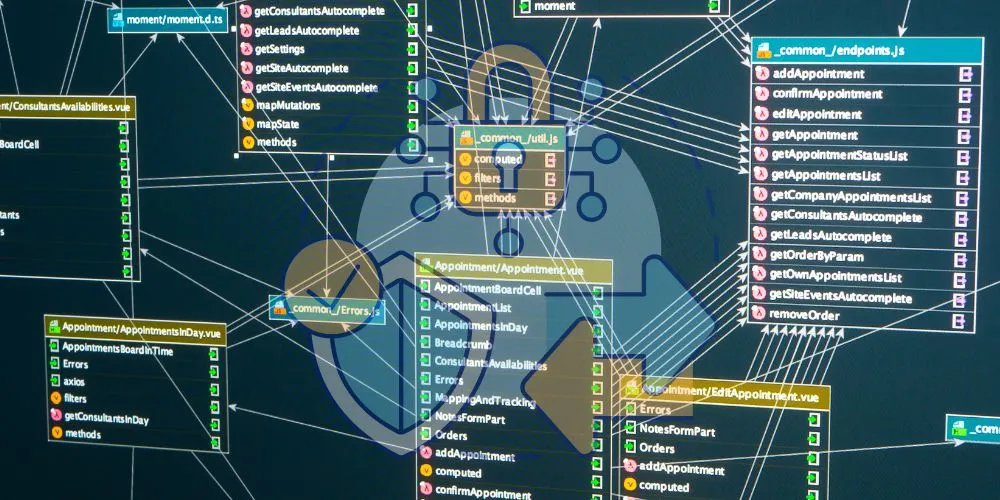In the ever-expanding digital landscape, Security Information and Event Management (SIEM) emerges as a linchpin in the proactive defense against cyber threats. This in-depth exploration unveils the pivotal role of Security Information and Event Management, unraveling its core functions, components, methodologies, challenges, and the transformative impact it has on fortifying cybersecurity postures in the dynamic realm of technology.
The Significance of Security Information and Event Management (SIEM):
Security Information and Event Management is a sentinel, playing a crucial role in cybersecurity by providing organizations with a centralized and comprehensive view of their digital security posture. Its significance lies in gathering, analyzing, and correlating security data from various sources, offering real-time insights into potential security incidents. By aggregating information and events, SIEM empowers organizations to detect and respond to cyber threats swiftly, ensuring the resilience of their digital assets.
At its core, Security Information and Event Management performs several fundamental functions that collectively contribute to robust cybersecurity. These functions include log management, event correlation, real-time monitoring, threat detection, incident response, and compliance reporting. Log management involves collecting and storing logs from diverse sources, while event correlation identifies patterns or anomalies that could indicate security incidents. Real-time monitoring allows immediate threat detection, and incident response capabilities enable swift actions to mitigate risks and contain potential breaches.
Security Information and Event Management comprises key components that deliver a comprehensive security solution. These components include data collection agents, the event processing engine, the storage repository, and the user interface. Data collection agents gather information from various sources, feeding it into the event processing engine. The engine then correlates and analyzes the data, storing relevant information in a repository for future reference. The user interface provides a centralized dashboard for security analysts to monitor, investigate, and respond to security incidents.
Methodologies in SIEM Implementation
Implementing Security Information and Event Management involves adopting specific methodologies to ensure effectiveness. The process typically includes the following steps: defining objectives and use cases, selecting appropriate data sources, configuring data collection and parsing, setting up correlation rules, fine-tuning alert thresholds, and integrating incident response processes. This systematic approach ensures that SIEM is tailored to the organization’s unique security requirements and operational environment.
Challenges in SIEM Implementation
Despite its pivotal role, it is not without challenges, requiring organizations to navigate complexities for optimal effectiveness.
Overwhelming Volume of Security Alerts
One significant challenge in SIEM implementation is dealing with the overwhelming volume of security alerts. The sheer quantity of data generated can lead to alert fatigue, where security teams may struggle to distinguish between routine events and genuine threats. Addressing this challenge involves fine-tuning correlation rules, implementing intelligent alerting mechanisms, and prioritizing alerts based on risk levels.
Integration Complexity with Diverse Systems
Security Information and Event Management solutions often need to integrate with diverse systems and technologies within an organization, leading to integration complexities. Ensuring seamless communication between platforms, applications, and security tools requires meticulous planning, robust APIs, and ongoing maintenance to accommodate evolving IT landscapes.
Skill and Resource Constraints
Effective SIEM implementation requires skilled cybersecurity professionals and adequate resources. Many organizations face challenges in recruiting or training personnel with the expertise to manage and maximize the potential of SIEM solutions. Addressing this challenge involves investing in training programs, collaborating with external experts, and leveraging managed security services if internal resources are limited.
Evolving Threat Landscape
The ever-evolving threat landscape presents a continuous challenge for the implementation of Security Information and Event Management. Cyber adversaries constantly adapt their tactics, techniques, and procedures, necessitating regular updates to SIEM rules and configurations. Staying ahead of emerging threats requires a proactive approach, threat intelligence integration, and continuous monitoring of the cybersecurity landscape.
Future Trends in SIEM
The future of SIEM is shaped by transformative trends that leverage emerging technologies to enhance cybersecurity capabilities further.
Integration with Artificial Intelligence (AI) and Machine Learning (ML)
The integration of SIEM with Artificial Intelligence (AI) and Machine Learning (ML) is a significant trend. AI and ML enhance SIEM’s ability to detect and respond to complex threats by automating pattern recognition, anomaly detection, and decision-making processes. This trend promises more efficient threat detection and reduced response times.
Cloud-Based SIEM Solutions
Cloud-based Security Information and Event management solutions are gaining prominence as organizations migrate their infrastructure to the cloud. Cloud-based SIEM offers scalability, flexibility, and the ability to analyze vast amounts of data generated in cloud environments. This trend aligns with the growing adoption of cloud technologies across industries.
User and Entity Behavior Analytics (UEBA)
User and Entity Behavior Analytics (UEBA) is becoming integral to SIEM solutions. UEBA focuses on analyzing the behavior of users and entities within the network, identifying deviations from normal patterns that could indicate insider threats or compromised accounts. This trend enhances SIEM’s ability to detect subtle and sophisticated attacks.
Conclusion
Security Information and Event Management (SIEM) stands at the forefront of cybersecurity, providing organizations with a robust defense against evolving cyber threats. While challenges exist in its implementation, SIEM’s significance cannot be overstated in the contemporary digital landscape. As Security Information and Event Management continues to evolve, integrating AI, ML, and cloud-based solutions, organizations prioritizing and investing in this technology will fortify their cybersecurity posture, ensuring a proactive and resilient defense against the ever-growing array of cyber threats. SIEM’s role in safeguarding digital landscapes is pivotal, and its ongoing advancements promise to keep organizations ahead of the cybersecurity curve, securing the integrity and confidentiality of their digital assets.





